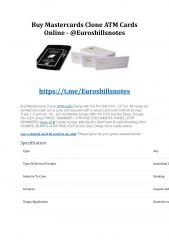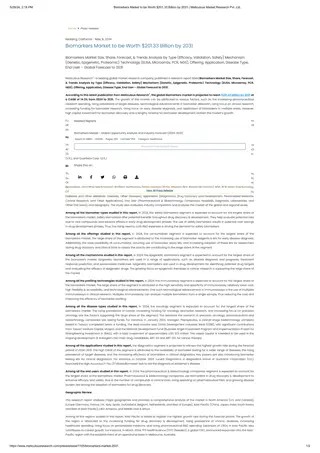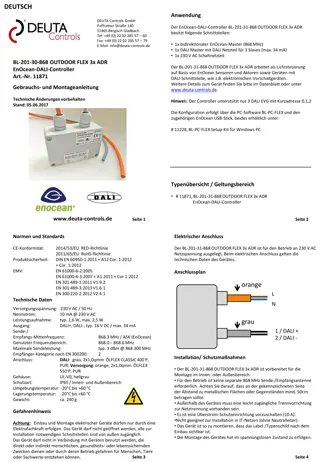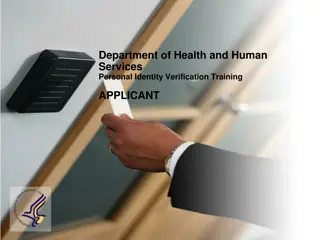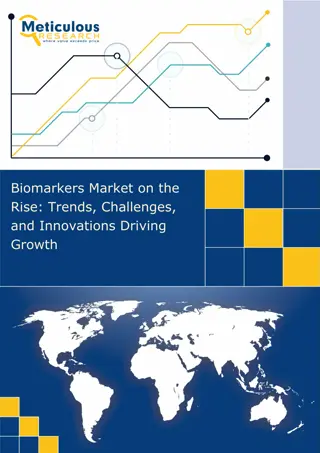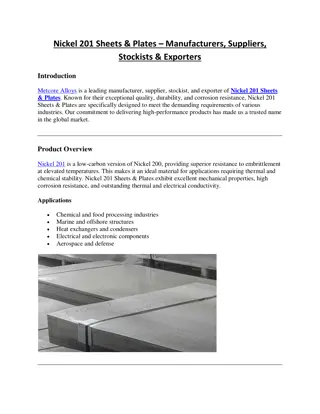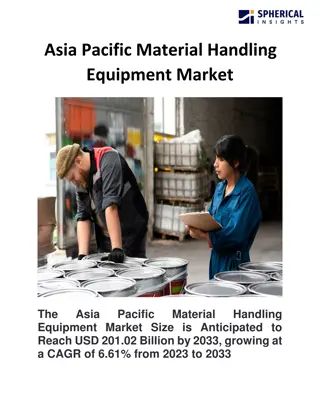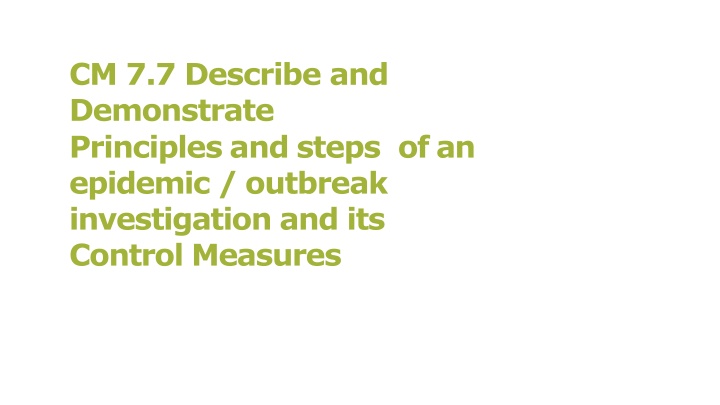
Managing Waterborne Outbreak Investigations
Learn about the principles and steps involved in investigating and controlling waterborne outbreaks, including identifying sources, implementing control measures, and preventing further cases. Explore when to investigate such outbreaks and the objectives of outbreak investigations.
Download Presentation

Please find below an Image/Link to download the presentation.
The content on the website is provided AS IS for your information and personal use only. It may not be sold, licensed, or shared on other websites without obtaining consent from the author. If you encounter any issues during the download, it is possible that the publisher has removed the file from their server.
You are allowed to download the files provided on this website for personal or commercial use, subject to the condition that they are used lawfully. All files are the property of their respective owners.
The content on the website is provided AS IS for your information and personal use only. It may not be sold, licensed, or shared on other websites without obtaining consent from the author.
E N D
Presentation Transcript
CM 7.7 Describe and Demonstrate Principles and steps of an epidemic / outbreak investigation and its Control Measures
What is an outbreak? Unexpected increase in cases in a specific place and time Exceedance of a predefined alert threshold Two or more cases of disease linked to the same source
What is an waterborne outbreak? -WHO definition At least two people experience a similar illness after exposure to the source e.g. water and the evidence suggests a probable source e.g. water
(Large water supply) waterborne outbreaks Associated with watershed events: Defects in the water-treatment process or distribution system Exceedance of water-qualityparameters Sudden, rapid and widespread occurrence of gastrointestinal consultations Clustering of cases in a particular water-supply zone
When to investigate a waterborne outbreak? The outbreak is likely to continue if no intervention Unknown source Unknown cause Severe and/or unusual disease Large number of cases
When to investigate a waterborne outbreak? The outbreak is likely to continue if no intervention Unknown source Unknown cause Severe and/or unusual disease Large number of cases However ,it will still be important to identify the cause and contributing factors in order to prevent new outbreaks
Outbreak investigation objectives Confirm the outbreak Identify the source and contributing factors Implement control measures Inorder prevent further cases
Outbreak investigation steps Differ from outbreak to outbreak Simultaneous and in parallel Control measures as early as possible Communication on an ongoing basis
10step approach 1. Detect and confirm the outbreak and agent 2. Rapid Response Team (RRT) 3. Define cases 4. Identifycases and obtain information 5. Descriptive epidemiological investigation (time, place, person) 6. Additional studies (environmental, risk assessments, laboratory) 7. Interview cases and generate hypotheses 8. Evaluate the hypotheses 9. Inform risk managers and implement control measures 10.Communicate findings,make recommendationsand evaluate the outbreak response Communication Measures
Step 1 .Detect and confirm the outbreak and agent Health-care systems Detection by surveillance systems Indicator and event based surveillance Epidemiological Microbiological Health-care facilities reports Other signals Absenteeism from work,schools Increased sales of certain medications Media reports Water quality Routine samples with faecal bacteria Water treatment or distribution failures User complaints
Step 1 .Detect and confirm the outbreak and agent Isthe outbreak real? More cases than expected? Seasonal variations? Notification artefacts? New surveillance system? Diagnostic bias?
Step 1 .Detect and confirm the outbreak and agent Identifying the microorganism helps to: develop a hypothesis about the source (previous events) identify time of exposure (incubation period) choose control measures Do not wait for lab results to start the investigation Confirm a proportion of cases
Step 1 .Detect and confirm the outbreak and agent Time between the contamination event and the outbreak detection Long incubation periods Few cases go to the doctor ( peak of the inceberg ) Longer delay lower probability of detecting the agent in water Relevant water samples may no longer be available
Country example From the 12 to 15 September 2023, the Ministry of Health and Family Welfare, Government of India, reported six laboratory-confirmed Nipah virus cases, including two deaths, in Kozhikode district, Kerala. Large waterborne Campylobacter outbreak in Norway in 2019 Over 2 million cases have been reported since 2005. Chikungunya disease has now been identified in over 110 countries in Asia, Africa, Europe and the Americas.
Step 1 .Detect and confirm the existence of the outbreak and confirm the causative agent example Country 6 June 2019,Ask y,Norway. In 24 h,10people hospitalized with fever, abdominal pain and diarrhea, and 30 consultations from out-of-hours primary healthcare services. Many patients presenting with gastroenteritis had home addresses near each other drinking-water? One person tested positive for Campylobacter Medical Officer in Ask y reports the outbreak to the Norwegian Institute of Public Health. Hyllestadet al. (2020):Large waterborne Campylobacter outbreak: use of multiple approaches to investigate contamination of the drinking water supply system, Norway, June 2019. Eurosurveillance, https://doi.org/10.2807/1560-7917.ES.2020.25.35.2000011
Outbreak context example Country Island municipality Ask y,Norway 29,500 inhabitants Hyllestadet al. (2020):Large waterborne Campylobacter outbreak: use of multiple approaches to investigate contamination of the drinking water supply system, Norway, June 2019. Eurosurveillance, https://doi.org/10.2807/1560-7917.ES.2020.25.35.2000011
Outbreak context example Country Three different water supply systems in Ask y: A,B,C Water Supply System A (WSS-A) from the 1950s,serves ca. 12,000 people in the south of the island. WSS-A has 9 reservoirs, including 3built as unlined mountain caverns. One of these reservoirs was reservoir X Hyllestadet al. (2020):Large waterborne Campylobacter outbreak: use of multiple approaches to investigate contamination of the drinking water supply system, Norway, June 2019. Eurosurveillance, https://doi.org/10.2807/1560-7917.ES.2020.25.35.2000011
Step 1 .Detect and confirm the existence of the outbreak and confirm the causative agent example Country Immediate precautionary control measures taken once outbreak detected 6 June: Boil Water Advice issued 7June:Reservoir X taken out of service Hyllestadet al. (2020):Large waterborne Campylobacter outbreak: use of multiple approaches to investigate contamination of the drinking water supply system, Norway, June 2019. Eurosurveillance, https://doi.org/10.2807/1560-7917.ES.2020.25.35.2000011
Step 2.Form the Rapid Response Team (RRT) Outbreak confirmed Investigation needed Form the Rapid Response team
Step 2.Form the Rapid Response Team (RRT) Stakeholder Role Overall coordination Local/regional public Health agency Environmental investigation Food/water authority Control measures implementation Water supplier Case management Health- care providers Microbiological investigation Laboratory Communication experts!!
Step 2.Form the Rapid Response Team (RRT) Coordinating activities across agencies can be difficult Clear roles and responsibilities Teams before an outbreak occurs Contact meetings and exercises between crisis
Step 2.Form the Rapid Response Team (RRT) example Country Complete investigation planned Epidemiological Microbiological Environmental Municipal services Norwegian Food Safety Authority Norwegian Institute of Public Health Hyllestadet al. (2020):Large waterborne Campylobacter outbreak: use of multiple approaches to investigate contamination of the drinking water supply system, Norway, June 2019. Eurosurveillance, https://doi.org/10.2807/1560-7917.ES.2020.25.35.2000011
Step 3:Define cases Time Place Person Case definition components Possible Probable Confirmed Case Classification
Step 3:Define cases A person (who?)living in town XXXX (where?),with diarrhoea ( 3 loose stools in 24 hours) and any one of the following symptoms abdominal pain, nausea and vomiting (who?) and date of onset of symptoms from 1August 2020 (when?) and not travel history (who?,where?).
Step 4:Identify cases and obtain information Inorder to: Estimate the size of the outbreak and its distribution Determine the population at risk Enroll patients hypothesis-generating pilot interviews descriptive and analytical epidemiology Identify patients who need treatment
Step 4:Identify cases and obtain information How? Passive case finding Existing surveillance system. Active case finding Additional laboratories not part of national surveillance systems Public and private hospitals or primary healthcare centers People at risk:school children,nursing homes,mass gatherings Invitation lists, reservation lists, guest lists
Step 4:Identify cases and obtain information Line List Basic information on each case ID,age, type of case, sex, phone number, residence, clinical information . One line per case Spreadsheet Updated as the investigation develops Facilitates systematization of the information Provides an overall picture
Step 4:Identify cases and obtain information Pilot interviews Standardized questionnaire: clinical information, risk factors and demographics Comprehensive:all relevant exposures Few interviewers Sample of cases Obvious common exposures? Exclude exposures?
Step 4:Identify cases and obtain information Questionnaires distribution Email Web questionnaires Telephone interviews Paper questionnaires by mail Social media
Step 5:Descriptive epidemiological investigation What do cases have in common? Generate hypothesis Time When were they infected? Place Where were they infected? Where do they live? Person What are the symptoms and etiology? Who was infected?
Step 3:Define cases Step 4: Identify cases and obtain information Step 5:Descriptive epidemiological investigation example Country Outbreak monitoring Determine the extend of the outbreak Case finding: gastroenteritis consultations Map gastroenteritis consultations Trawling questionnaires to first campylobacteriosis cases Survey childcare centres Ascertain start and distribution of the outbreak and document absence for illness
Step 3:Define cases Step 4: Identify cases and obtain information Step 5:Descriptive epidemiological investigation example Country Outbreak monitoring Determine the extend of the outbreak Case finding: Gastroenteritis consultations (who?) at primary care in Ask y (where?) between 3June and 15June (when?) Map consultations by household address and water supply Trawling questionnaires to first campylobacteriosis cases Food consumption Animal contact Environmental exposures Clinical and demographical information
Step 3:Define cases Step 4: Identify cases and obtain information Step 5:Descriptive epidemiological investigation Number of gastroenterititis consultations at general practitioner and out-of-hours primary healthcare services
Step 3:Define cases Step 4: Identify cases and obtain information Step 5:Descriptive epidemiological investigation Outbreak monitoring Sharp increase in gastroenteritis consultations (from 12to 1 82 consultations) on Thursday 6 June Consultations evenly distributed among all age groups, although in-person consultations were primarily for children
Step 3:Define cases Step 4: Identify cases and obtain information Step 5:Descriptive epidemiological investigation example Country Water supply zones of water supply system WSS-A defined by different reservoirsZones 6,7 and 8 were served by Reservoir X. Estimated incidence rates for gastroenteritis consultations linked to reservoir supply zones
Step 3:Define cases Step 4: Identify cases and obtain information Step 5:Descriptive epidemiological investigation example Country Outbreak monitoring Gastroenteritis patients residences were coincided with three water supply zones served by Reservoir X. The three zones with Incidence Rate >1 are the ones served by Reservoir X.
Step 3:Define cases Step 4: Identify cases and obtain information Step 5:Descriptive epidemiological investigation example Country Outbreak monitoring Trawling questionnaires to five campylobacteriosis cases. Diarrhoea, stomach pain and fever (onset 4-5 June) Tap water at home in the week before symptom onset Attendance to events, food items, contact with animals or recreational water not common to all five cases
Step 3:Define cases Step 4: Identify cases and obtain information Step 5:Descriptive epidemiological investigation example Country Survey of childcare centres Case definition:any person absent from the childcare centre (child or employee) because of diarrhoea or vomiting (who?, where?)between 28 May and 7 June (when?) Comparison of attack rates in childcare centres served/not served by Reservoir X
Step 3:Define cases Step 4: Identify cases and obtain information Step 5:Descriptive epidemiological investigation example Country Survey of childcare centres All childcare centres (n=27)in the municipality participated in the study. Eight (769 children and employees) in areas supplied by Reservoir X and 19 ( 1,761 children and employees)in areas supplied by other reservoirs. Childcare centres in affected areas: Attack rate:20% Childcare centres in unaffected areas: Attack rate 2% Absences started to increase at the childcare centres in affected areas on 3 June (n=26)and peaked on 7 June with 81absences
Step 6:Additional studies (environmental, laboratory) Environmental investigation Laboratory investigation of the water supply system
Step 6:Additional studies Environmental investigation 1)Description of the water supply system Water source Abstraction points and distribution network Treatment processes Storage tanks Distribution network Location of potential contamination sources
Step 6:Additional studies Environmental investigation 2)Rapid system assessment Hazardous events? Control measures in place? Interview water-supply system personnel Review outcomes of sanitary surveys Assess water quality information and weather records Operational records and procedures: any problems compromising control measures? Customer complaint reports Non-piped systems: Review water collection, transport and handling Map potential exposures of interest
Step 6:Additional studies Laboratory investigation of the water-supply system Provides strong evidence on the link between the source and cases Still possible to demonstrate that water is the source of an outbreak even if the agent is not isolated from the water-supply system
Step 6:Additional studies Laboratory investigation of the water-supply system Increase frequency of sampling Increase the number of sampling sites Suspected sources of pollution Critical points in the treatment plant Water and sediment from storage reservoirs and the distribuition system Stored water
Step 6:Additional studies Laboratory investigation of the water-supply system Microorganisms may not be detected in the water-supply system due to: Time between the contamination event, exposure and sampling. Transient contamination Disinfection of the system as a preliminary measure Special sampling needed to isolate enteric viruses or protozoa
Step 6:Additional studies (environmental, laboratory) example Country Environmental investigation Description of the water supply network Under normal conditions, Reservoir X supplies Zone 6 (1,350 residents) Before the outbreak,a valve opened from Reservoir X to ensure replacement of water in response to customer complaints about the water quality. This led to a connection between zone 6 and zones 7 and 8 (3,558 residents)with drinking water from both Reservoir X and others Consultations indicated a higher IR in these zones The valve was closed on 6 June
Step 6:Additional studies (environmental, laboratory) example Country Environmental investigation Visual inspection of Reservoir X Basin constructed as an unlined rock cavern. Its entrance sealed by a locked door 400 m3 of water, located above a residential area in mountainous terrain Natural cracks located in the back of the reservoir, leaks in the concrete construction and water running from inside the roof. Large antenna with power lines above the reservoir, were birds could gather Risk of bird faeces contaminating the area below No animals observed No unusual malfunctions reported before the outbreak


